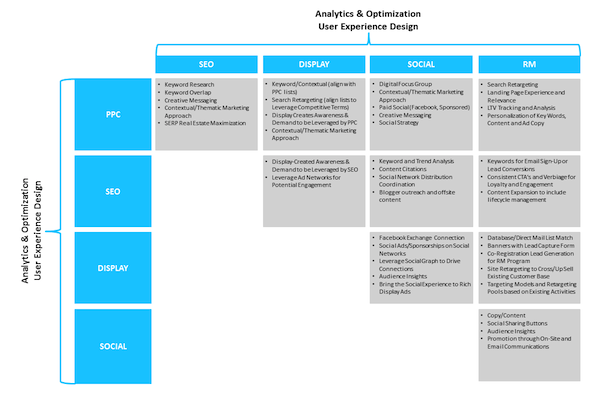Many paid search marketers often go about their business of optimizing their accounts without really caring about what else might be happening in the digital space around them. This is something that is starting to change for a couple of reasons:
- Consumers have changed the way they navigate the web along their customer journey.
- The power of integration from other channels is more easily measured and shown via attribution or other data points.
The most obvious of these integration points is between paid and organic search. These two, while very different in optimization tactics, are fighting for the same customer and keyword term. This ability to maximize share of voice is critical, especially when you start to understand the multiplication power of having multiple listings.
The question I’ve been watching closely is how many brands out there have both paid and organic listings for a given keyword? I’ve been monitoring the same keyword set for 4 years now to better understand the changes in integration. The year marked the highest paid and organic overlap we’ve ever seen – at 22 percent.
Some key takeaways:
- Big jumps in travel and technology verticals. Some key brands seem to have really tried to won the space including Amazon and Best Buy in tech, and Princess Cruise and Disney Travel.
- Financial services was the only vertical to see a decline. There has been a continual movement toward more aggregator sites who are monetizing their traffic via arbitrage and lead generation. They are also generating content at a pace that larger financial institutions struggle to keep up with.
- These same figures when you consider brands that have multiple organic listings jumps to 25 percent overall and jumps to 41 percent overlap (from 33 percent) with so many SKUs for their products getting listed for various keywords.

So how can you be better integrated?
My agency recently completed a co-exposure test to better understand the impact on keyword synergies. The test revealed a 200 percent increase in conversions when we had both paid and organic listings on the page. These business results help fuel the need for better integration.
To help our teams and our clients consider points of natural integration, we created the below “Integration Matrix.”

This matrix is used to help remind us as we create deliverables to be mindful of these integration points across search, social, e-mail, and display.
When you’re optimizing, stop and think about these points of integration. Have you maximized them? What more could you do to test and measure the impact of integration to improve to your business?

